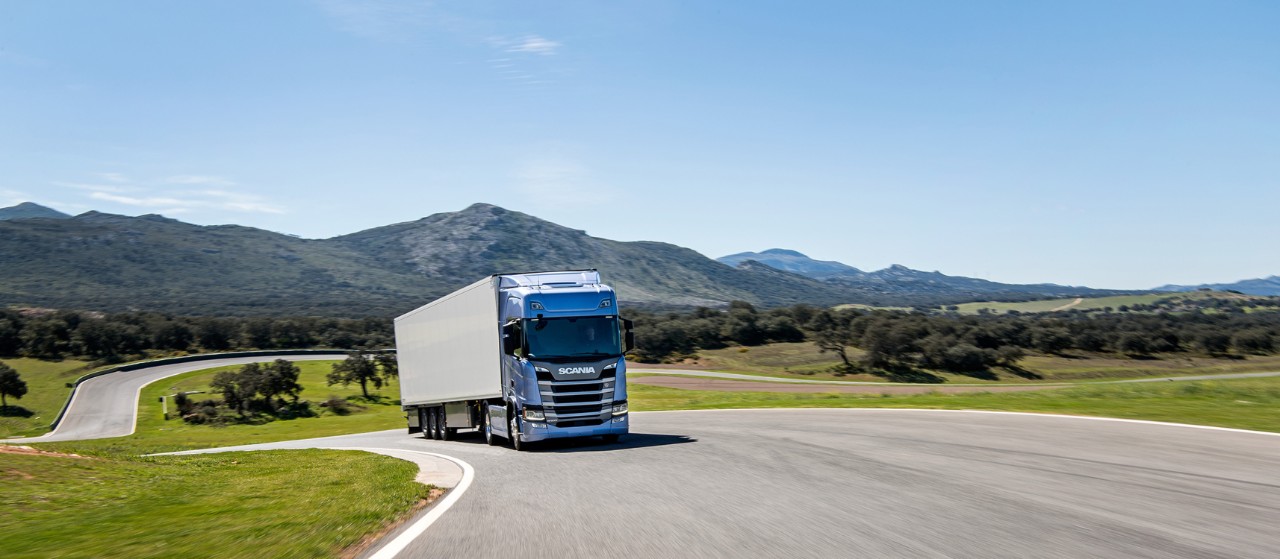
How to use the truck’s kinetic energy to save fuel
16 AUGUST 2018
Why not make the most of the truck’s kinetic energy to save fuel? That’s what Scania’s new Pulse & Glide functionality does – even on flat road stretches.
Connectivity has changed the conditions for long haulage transport radically. In recent years, a number of new efficiency-boosting services and functions have been launched thanks to the new technology.
An example is the new, smart cruise control Scania Active Prediction that was launched in 2012. The system uses topographical map data and GPS technology to determine the characteristics of the road three kilometres ahead.
“Based on this data, the system selects gearing and speed strategies for the lowest possible fuel consumption. When compared to a conventional cruise control, we saw that Active Prediction could save between 5–7 percent fuel, with just around 0.9 percent lower average speed,” says Fredrik Roos, powertrain control strategist at Scania.
But Scania’s engineers didn’t stop there. Fredrik Roos and colleague Mikael Ögren formed a team that continued the development. The team focused on the algorithms that calculate how the vehicle’s kinetic energy can be used to eco-roll with the gears in neutral.
“Through simulations of different speed profiles we could see that patterns where the speed was increased just before the eco-roll phase was beneficial for the fuel consumption. That’s what we wanted the system to do, automatically,” Roos says.
The result of the team’s efforts, Pulse & Glide, was launched in 2017, adding new functionality to Scania Cruise Control with Active Prediction (CCAP). In the latest version of CCAP, eco-roll can be used even on gradients that under normal circumstances are not steep enough to maintain speed.
Longer time for eco-roll
“By being able to increase speed – Pulse – and then freewheel – Glide – the collective time that the vehicle uses eco-roll can be considerably increased,” says Roos. “On suitable stretches of road, the new function alone can contribute to additional fuel savings of up to 0.5 percent.”
According to Fredrik Roos, the complete active prediction system’s potential is best realized when driving truck and trailer combinations between 20 and 40 tons in hilly terrain and relatively light traffic. But Scania’s new system with Pulse & Glide has proved its worth also on flat road stretches, with a total fuel saving of 1.5 percent compared to a standard cruise control.
Now, Roos’ team has started looking at future challenges.
“We are continuously developing the algorithms to also being able to avoid unnecessary braking in situations where traffic is dense and you have short distances between the vehicles. This scenario will become more common as we move towards more convoy driving, or platooning. We are also looking into how we can optimize the system for hybrid powertrains.”